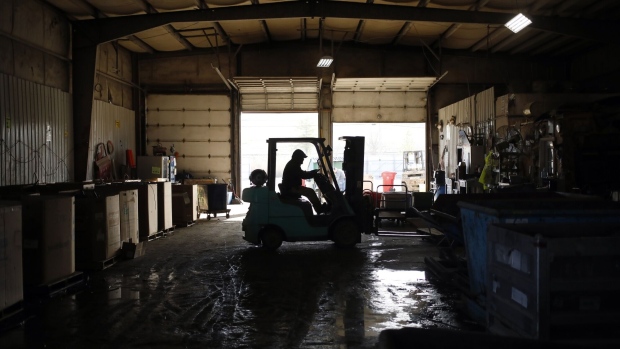May 4, 2023
US Productivity Declines More Than Forecast, Labor Costs Climb
, Bloomberg News

(Bloomberg) -- US worker productivity declined in the first quarter by more than forecast and labor costs accelerated, underscoring a challenging inflation fight for the Federal Reserve.
Productivity, or nonfarm business employee output per hour, decreased at a 2.7% annual rate in the first quarter, according to figures out Thursday from the Bureau of Labor Statistics. That was the first drop in three quarters and compared to a 1.6% advance in the final three months of 2022.
Unit labor costs, or what a business pays to produce one unit of output, increased at a 6.3% rate after rising 3.3% in the prior period. While hours worked picked up and compensation continued to grow, output nearly stagnated.
The median estimates in a Bloomberg survey of economists called for a 2% decrease in productivity and a 5.5% advance in labor costs.
Firms often adopt new technologies or invest in equipment to improve worker efficiency and help offset the inflationary impact of higher wages and other costs. Such investment — whether in equipment or intellectual property products — has been strong through much of the last two years, but mounting economic headwinds have led some businesses to pull back.
Quarterly productivity figures are extremely volatile, but if the latest decline is sustained, it risks keeping inflationary pressures elevated.
What Bloomberg Economics Says...
“The first-quarter’s decline in productivity contributed to a sizable increase in unit labor costs - more bad news for a Fed struggling to tame inflation.”
— Jonathan Church, economist
To read the full note, click here
Thursday’s report showed hourly compensation increased 3.4%. Adjusted for inflation, however, it fell 0.3%.
Hours worked increased 3%, the most in a year, while nonfarm business output grew just 0.2%. That measure accounted for about three-quarters of gross domestic product in 2022.
Other data recently have showed labor-cost pressures remain firm. The employment cost index, a broad gauge of wages and benefits, picked up in the first quarter. Meanwhile, GDP — a key gauge of economic activity — moderated to an annualized 1.1% pace, weakness that in part reflects an inventory drawdown.
--With assistance from Chris Middleton.
(Adds Bloomberg Economics comment)
©2023 Bloomberg L.P.






